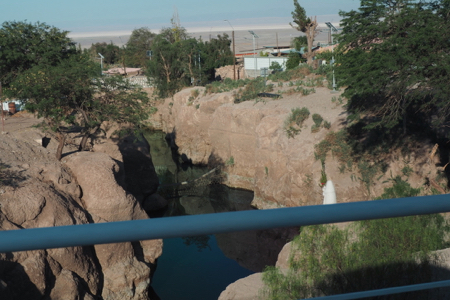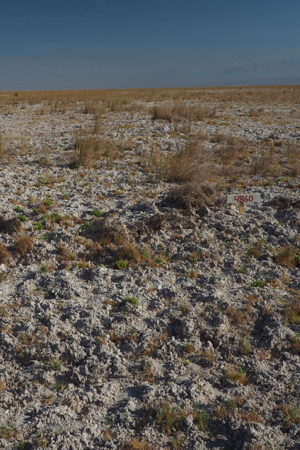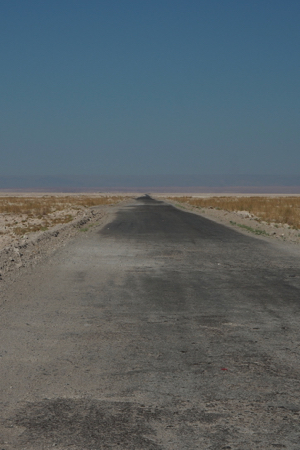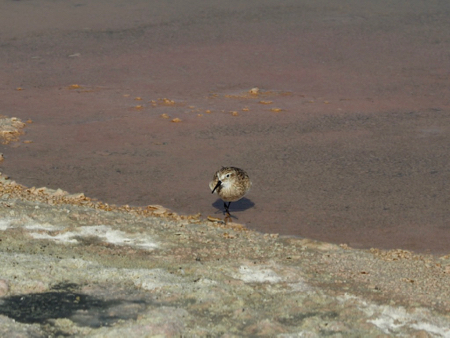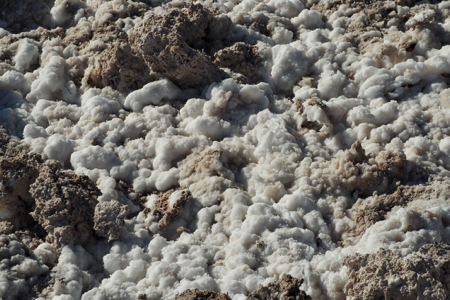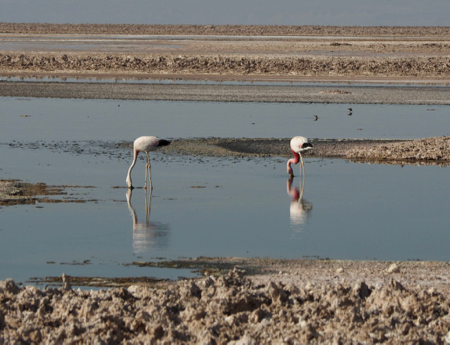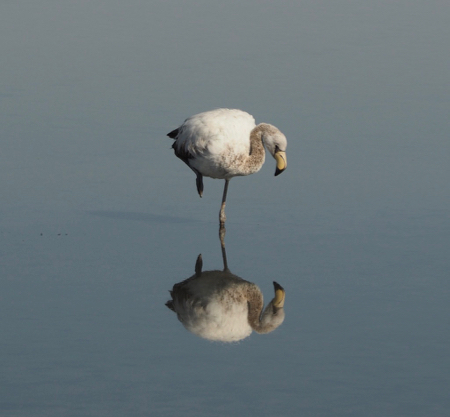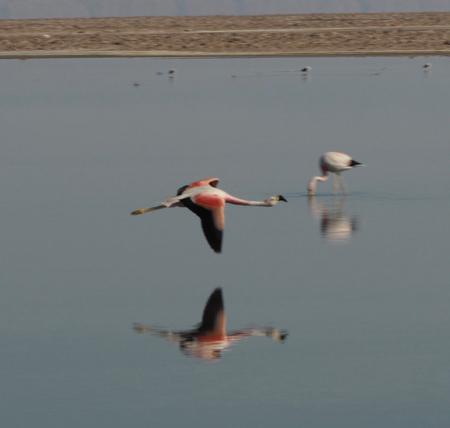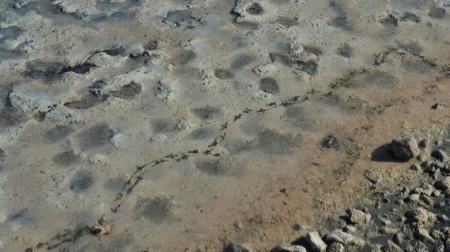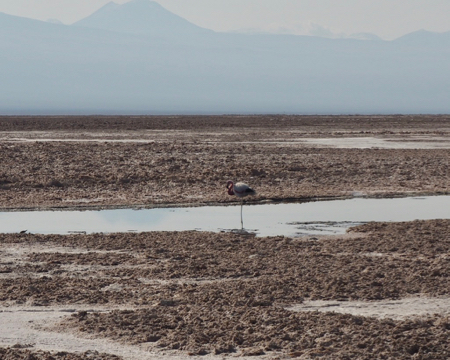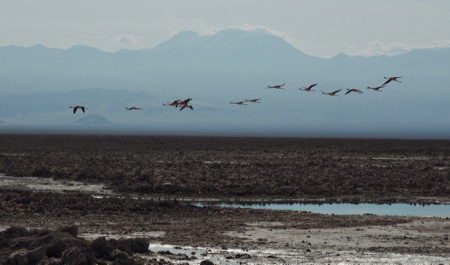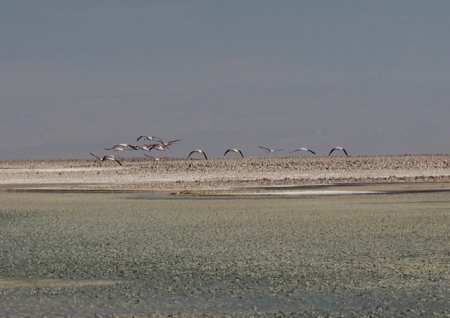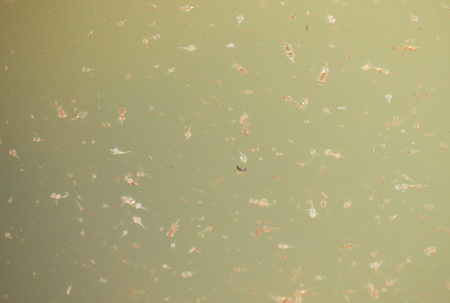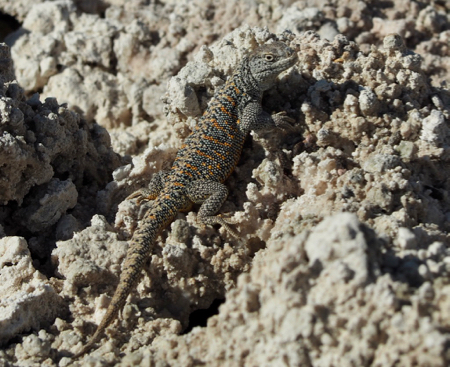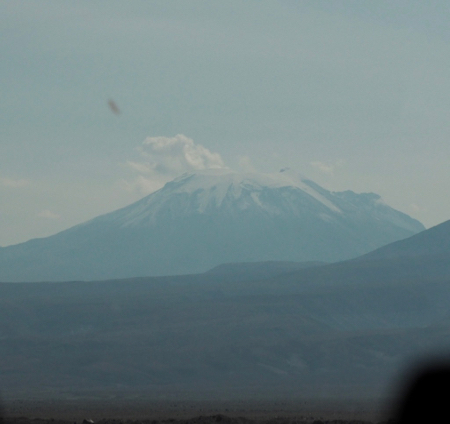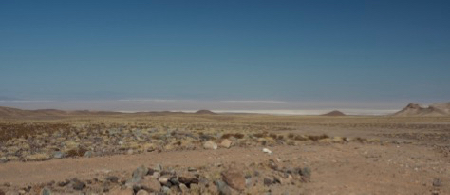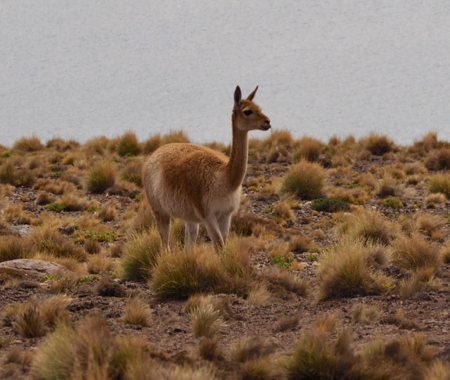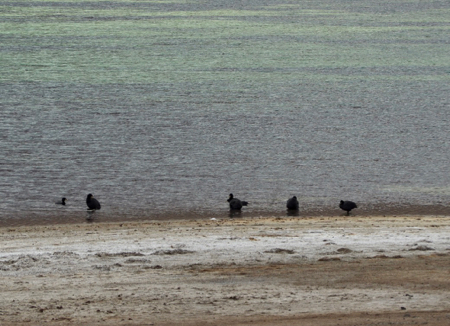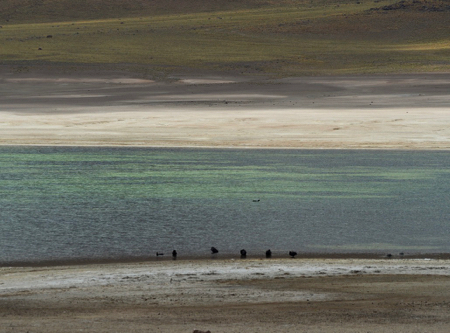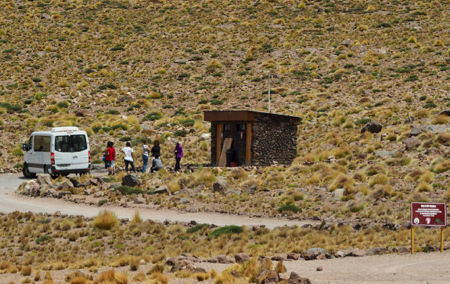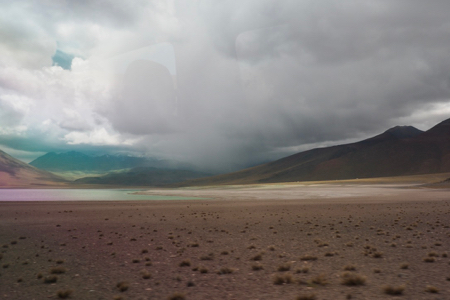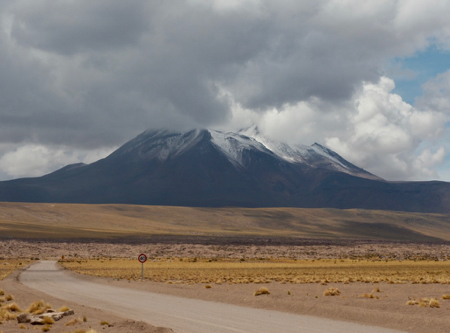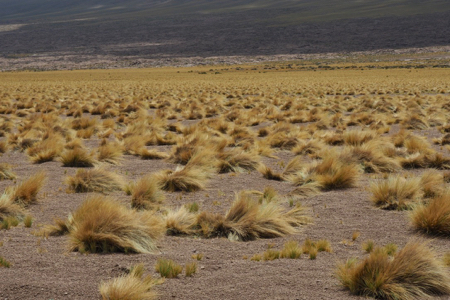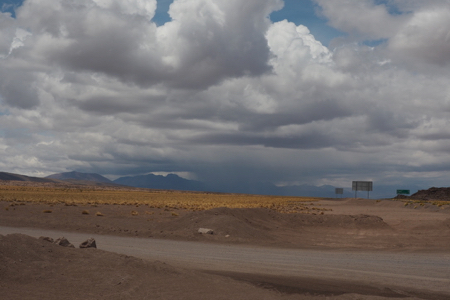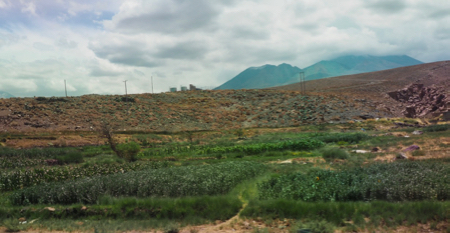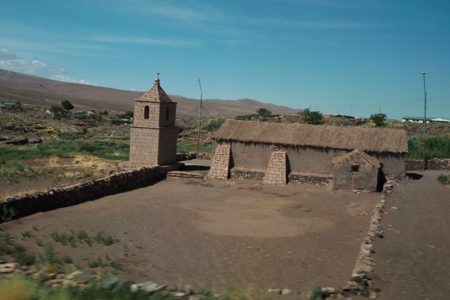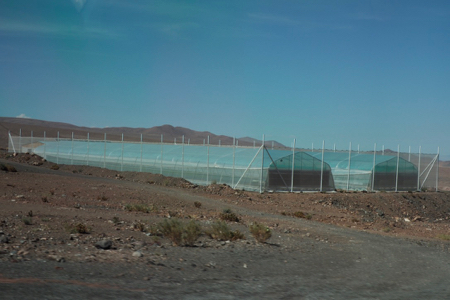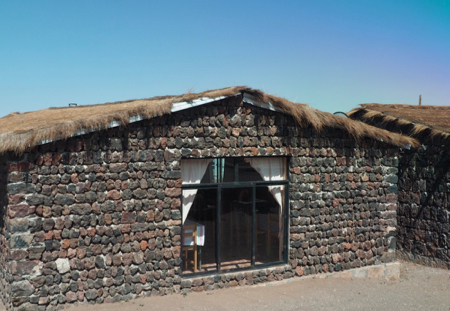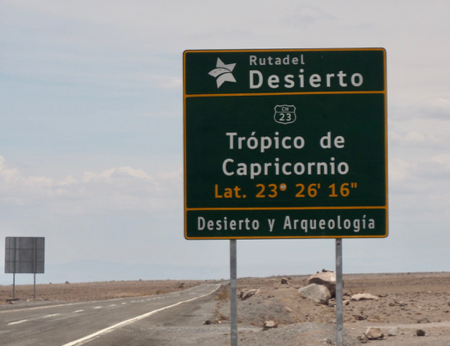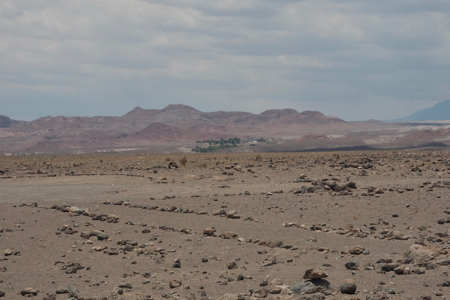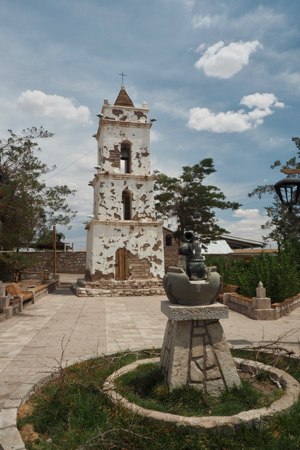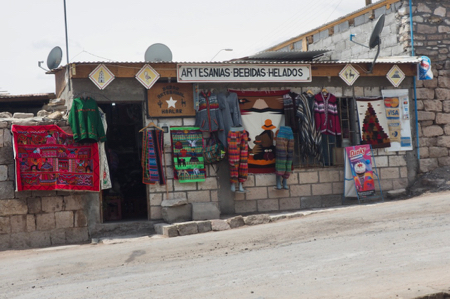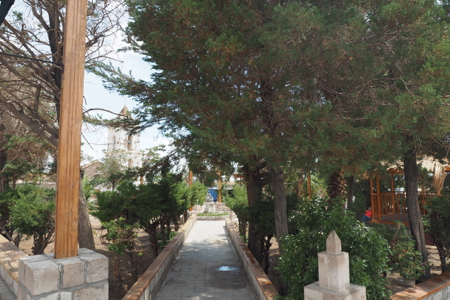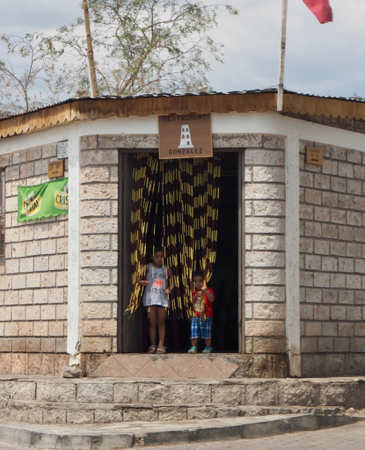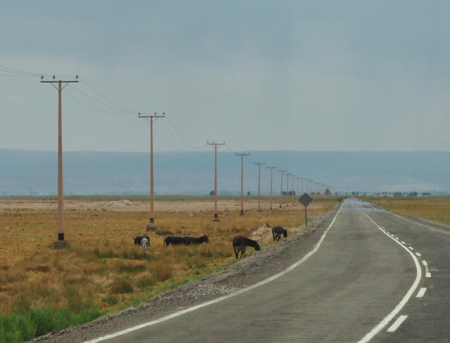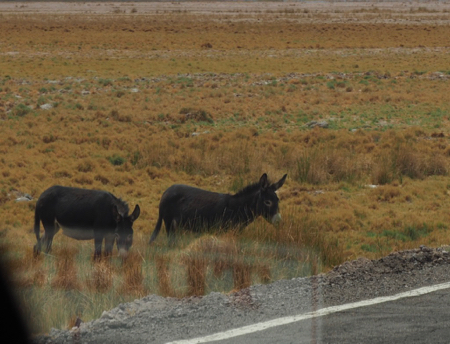Sun., 1/27/19 - Atacama Desert
We ate a nice buffet breakfast at our hotel at 7 AM and were on the van with 7 other passengers at 8 AM. We headed out to the Atacama Salt Flats to see the Andean flamingos. The area has salt a mile deep and it is covered with other sediments blown in from the East over the Andes Mountains and from the West from the Salt or Coastal Mountains. There is water in the Salt Flats so animals and birds can survive. We saw wild donkeys and vicuña, another species in the llama family. The Andes have many still active volcanos. The highest peak here in northern Chile is 22,000 feet and still rising. The Pacific Ocean tectonic plate is subducting under the South American plate making the mountains rise.
We entered the Soncor section of Los Flamingos National Reserve. This area contains salt lagoons which host migrating flamingos in the middle of the desert. We walked out to look at Andean flamingos with black tails and James flamingos with red and black tails. (The Chilean flamingos were not there.). The flamingos eat tiny brine shrimp (sea monkeys) that are high in protein. We also saw avocet, sand-pipers, and plovers and an endemic lizard who was very cute. The water level in the lagoon is controlled because of lithium mining in the area but kept at the right depth for the birds.
Water flowing through a cut in the rock
Salt flats
The road - still better than Uzbekistan
Soncor section of Los Flamingos National Reserve
Flamingos in the lagoon
Sand piper
Salt
Salt crystals
Andean and James flamingos
Flamingos and Avocets
Balancing act
Coming in for a landing
Flamingo footprints in the mud
Small bird (sand piper?) footprints
Big-footed flamingo
Avocets
Brine shrimp in a breeding pool - The pool is too deep for flamingos who need to wade in 4 to 6 inches of water as they eat. The shrimp are less than one cm in length and contain beta-carotene to give the flamingos their pink color.
Very cute lizzard
Also very pretty
Steaming volcano
Steaming volcano
Salt Flats in the distance
Salt Flats in the distance
After seeing the flamingos, we started to climb in altitude leaving the desert and driving up to the steppe desert of the Andes. The land allows desert straw (grasses) to grow making the landscape yellow below the snow topped mountains. We drove up to 14,000 feet to look out on two beautiful mountain lagoons, the Antiplano Lakes. They are filled with snow melt from the surface of the mountains as well as by underground water that seeped in from the snow. They are the Miscanti and the smaller Miniques Lakes and mountain peaks of the same names. At this point in the Andes we are only 100 km from Argentina.
Grasses (or desert straw) - these give the land its beautiful golden color
Grasses
Vicuna
Vicuna
Road to Lake Miscanti
Lake Miscanti
Looks like a geyser - but only a water line break
We saw several vicuña and large water fowl - horned coots or Tagus Cornuda. Some of us “hiked” the path up and over between the two lakes. It was wonderful to walk in the clean, brisk air at that altitude.
Horned Coots or Tagus Cornuda
Horned Coots or Tagus Cornuda
Vicuna and Lake Miscanti
Andean peaks - weather coming
"Necessary" room - with line, as always
Storm approaching across the lake
The land
Miniques volcano
Desert grasses
Desert grasses
Storm coming
We had an included lunch in the small village of Socaire. The soup was interesting with large kernels of maize, chunks of liver, and a vegetable (squash) broth. The entree was inedible - shoe leather that tasted like liver, dry minute rice, dry quinoa, and a salad. Dessert was stewed diced peaches - from a can. None of us ate much.
Irrigated plot of land
Church in Socaire
Greenhouses
Lunch restaurant
We stopped for pictures of a sign at the Tropic of Capricorn - 23° 26’ 16” latitude. When the sun is directly overhead here (Summer Solstice in the Southern Hemisphere), Antarctica (South Pole) gets 24 hours of sun and the Arctic (North Pole) 24 hours of night.
Tropic of Capricorn
Highway
Desert, some greenery in the distance
We stopped for 15 minutes in the oasis town of Toconao. The 1700s church roof has collapsed and the bell tower was blasted by a sand storm two years ago and the paint has peeled off in chunks. The small central square has green vegetation and trees. There is desert all around the village.
"Sand-blasted" church bell tower
Village shop
Central square
Curious children
Local street
Burros
Burros
We were back at our hotel at 4 PM for the rest of the day. We relaxed and reorganized for our 5 AM departure tomorrow. Dinner was spaghetti and an unusual blueberry “ice cream” for dessert at our hotel.
The rain threatened with thunder and lightening all day but never managed to fall on us.
| Return to Top | Return to Itinerary | Return to Trips page to view other trips | Return to Dreamcatcher Home Page |
